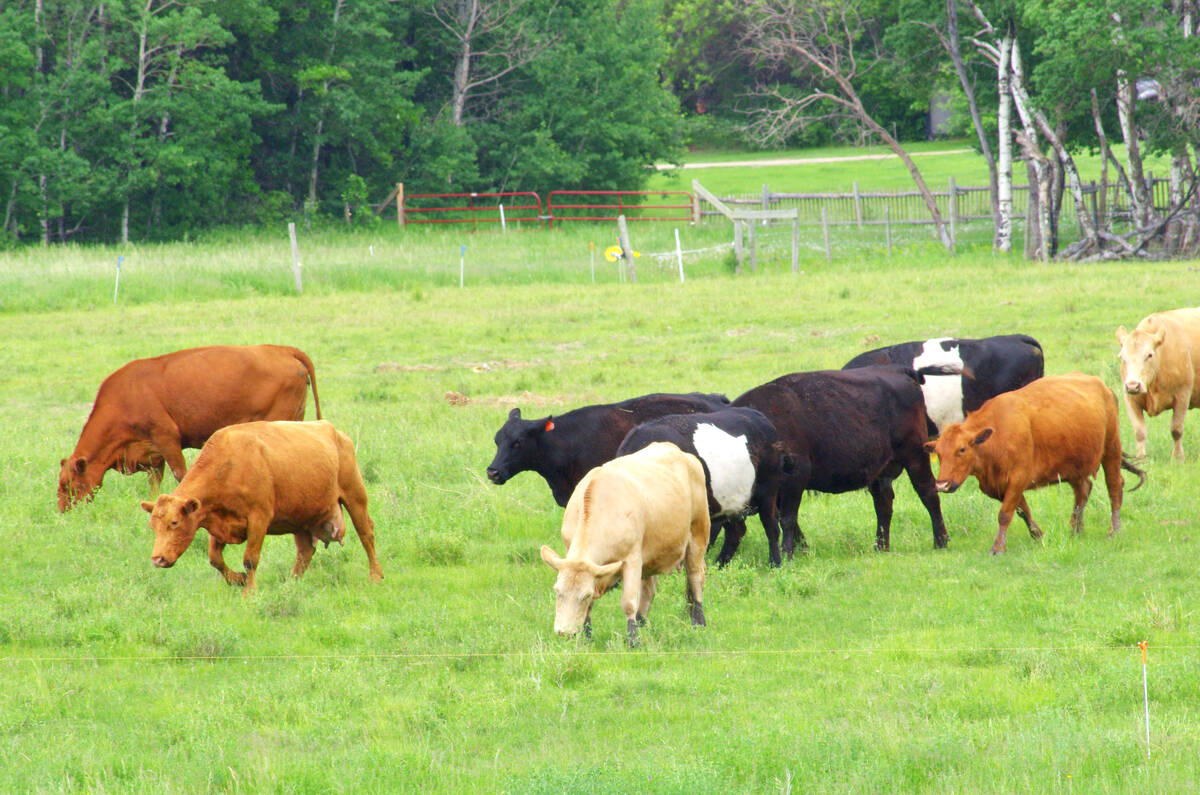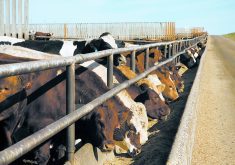MOOSE JAW, Sask. — Cattle numbers are the lowest in 60 years, but the full impact of those declining numbers hasn’t yet been seen, a market analyst told the Saskatchewan Stock Growers Association annual meeting.
Brian Perillat, agribusiness specialist at More Than Just Feed, said larger carcass weights and a more efficient beef industry are why the drop hasn’t been felt.
Record-high prices are encouraging those weights and that’s contributing to production.
Read Also

Quebec pork company calls for transparency around gene-edited pigs
Quebec-based pork company duBreton is calling for transparency around meats from gene-edited pigs on concerns that a lack of mandatory labelling will confuse consumers, and dilute certification claims. The organic sector is also calling for labelling rules.
“We’ve never had a bigger incentive to make cattle bigger,” he said.
Feed costs are reasonable, demand is strong and more beef is coming from fewer cattle. Typically carcass weights decline seasonally, but that hasn’t happened this year or last year because of the incentive to keep feeding, he said.
Perillat said it’s a great market for those selling calves but riskier for the buyers.
Producers are not yet retaining breeding heifers, which contributes to the bullish market.
Cow slaughter is down between 13 and 14 per cent this year, on top of more than 15 per cent last year, he said, because of the prices. Heifer retention hasn’t started because producers are more willing to take the profit in calves and ship heifers.
Perillat said when the market will peak is a huge unknown. There is still potentially more upside as numbers tighten, but it could peak sooner than many think if retention begins.
Cattle on feed numbers have been slow to decline, he said.
“We’ve come down a little bit from our peak,” Perillat said. “We’re nowhere as tight as 2014 in both Canada and the U.S. We’re just slightly below a year ago but well above the 2014-15 high.”
That’s when the last market highs were reached.
Continuing to push cattle into the feeding system rather than the breeding herd points to tighter numbers still to come.
In the U.S., imports have offset the decline in production and that country has become a major importer.
Large beef supplies mean consumers are facing record-high retail prices yet demand continues to be phenomenal. More than half of beef is consumed as ground beef, and Perillat said consumers may be trading down from steaks to ground beef and not just to chicken or pork.
He noted that beef and pork prices used to move together but the gap is bigger now. Pork is static, while wholesale beef prices have climbed through the roof even with strong supply.
He expects American imports to continue high next year, unlike the USDA, which projects both imports and production down in 2026.
Perillat also said the beef-on-dairy dynamic for the last few years has been interesting to watch. He said a lot of those dairy calves still entered the beef sector. The veal industry has fallen off, so beef picked up a few from that sector. However, the number of North American dairy cows is still around 10 million.
“What changed is the value of those calves,” he said.
Seven or eight years ago they were worth $25 and now they are worth $1,000.
That price is so good for dairy producers that they overshot the market, he said.
“They bred so many of their dairy cows to the beef-on-dairy to capitalize on the calf price they’ve actually shorted the replacement market on dairy heifers,” said Perillat. “The dairy heifer market is extremely high. We’ve actually seen a little bit of pullback of semen going into dairy herds.”
He estimated the beef-on-dairy movement pushed about 500,000 more cattle into the beef supply chain. But considering the herd is down by two million that doesn’t offset all the losses, he added.
Canada’s beef cattle herd was about 4.5 million cows before BSE, grew to 5.2 million right after and is now about 3.4 million. That’s “a good, solid million beef cows under what would be, in my mind, a good number to have,” Perillat said.
Economics, weather and land conversion to grain have all hampered any notion of growth.


















